Introduction
Stir-frying, a cornerstone of Asian cuisine, transforms simple ingredients into vibrant, flavorful meals. Among the lesser-known yet exquisitely delicate vegetables that shine in this cooking method is the lily bulb. Often overlooked in Western kitchens, lilies offer a crisp texture, subtle sweetness, and a floral aroma that elevates any dish. This article delves into the nuances of selecting, preparing, and stir-frying lilies to perfection, ensuring your culinary creations are both visually stunning and delicious.
The Allure of Lily Bulbs in Cuisine
Lily bulbs, scientifically known as Lilium lancifolium (tiger lilies) or Lilium brownii, have been cherished in Chinese, Japanese, and Korean cooking for centuries. Beyond their culinary appeal, they hold cultural significance, symbolizing purity and prosperity in festivals and family gatherings. Their mild, slightly bitter taste and crunchy consistency make them a versatile ingredient, pairing well with meats, vegetables, and aromatic seasonings.
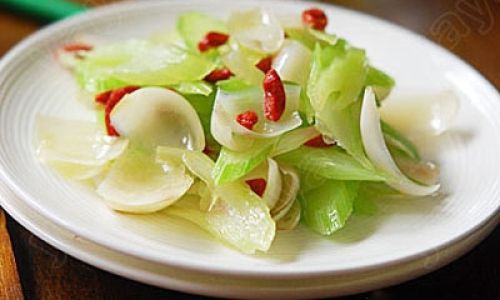
Selecting the Freshest Lilies
The foundation of a stellar stir-fry lies in ingredient quality. When choosing lilies, seek bulbs that are firm, plump, and devoid of blemishes. Fresh lilies should emit a faint, earthy fragrance without any sour or moldy undertones. Avoid those with shriveled skin or dark spots, as these indicate age or improper storage.
Preparation: Cleaning and Cutting
-
Cleaning:
- Rinse lilies under cold water to remove dirt.
- Peel off the outer layers, which may be tough or fibrous.
- Soak the bulbs in salted water for 10–15 minutes to eliminate bitterness and residual soil.
-
Cutting Techniques:
- Slicing: Thinly slice the bulb vertically for a elegant presentation.
- Julienne: Cut into matchsticks for even cooking and texture.
- Dicing: For a heartier bite, chop into small cubes.
The Science of Stir-Frying
Stir-frying at high heat (350–400°F/175–200°C) sears ingredients rapidly, preserving their nutrients, color, and crispness. A well-seasoned wok or skillet is essential, as its curved shape distributes heat evenly.
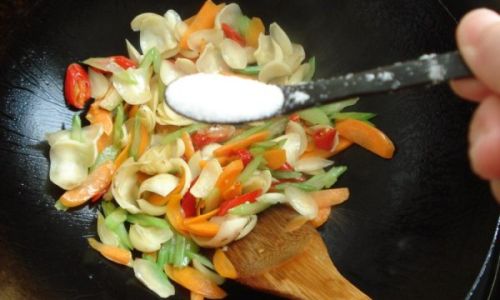
Key Steps to Stir-Fried Lily Perfection
-
Preheat the Wok:
- Heat the wok over high flame until droplets of water evaporate instantly.
- Add 1–2 tablespoons of oil (peanut, vegetable, or sesame) and swirl to coat.
-
Aromatics First:
- Sauté minced garlic, ginger, or chili for 30 seconds until fragrant.
- This step infuses the oil with flavor, creating a aromatic base.
-
Cooking the Lilies:
- Add sliced lilies and stir vigorously for 2–3 minutes.
- Avoid overcrowding the wok to prevent steaming (which softens texture).
-
Seasoning:
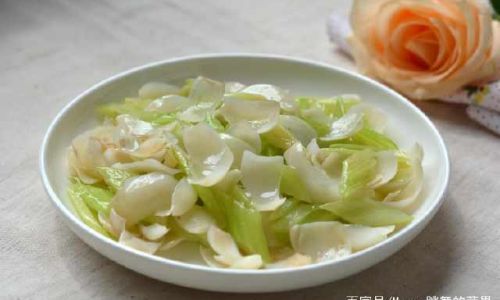
- Drizzle soy sauce, oyster sauce, or a pinch of sugar for balance.
- For depth, add a splash of rice wine or Shaoxing wine.
-
Finish with Garnishes:
- Toss in chopped scallions, cilantro, or toasted sesame seeds.
- A final drizzle of sesame oil enhances aroma.
Flavor Pairings and Variations
Stir-fried lilies adapt to diverse flavor profiles:
- Classic: Combine with wood ear mushrooms, carrots, and bamboo shoots.
- Spicy: Add dried red chilies and Sichuan peppercorns.
- Umami-Rich: Incorporate dried shrimp or fermented black beans.
- Vegetarian: Pair with tofu, snap peas, and cashews.
Troubleshooting Common Issues
- Soggy Texture: Overcooking or excess moisture. Ensure the wok is hot and drain lilies thoroughly after soaking.
- Bitter Aftertaste: Insufficient soaking. Extend the saltwater bath to 20 minutes.
- Uneven Cooking: Inconsistent slicing. Use a sharp knife for uniform pieces.
Advanced Techniques
- Velveting: Marinate lilies in a mixture of cornstarch, egg white, and oil before stir-frying for a silken texture.
- Blanching: Parboil lilies briefly to soften slightly before adding to the wok.
- Dual-Cooking: Stir-fry lilies first, then finish with a quick sauce reduction for complex flavor.
Cultural Context: Lily Dishes in Tradition
In Chinese cuisine, stir-fried lilies often feature in bai he xi gua ren (lily and melon seeds) or bai he chao xi hong shi (lily and tomato stir-fry). During the Lunar New Year, lilies symbolize unity and are served to wish households harmony.
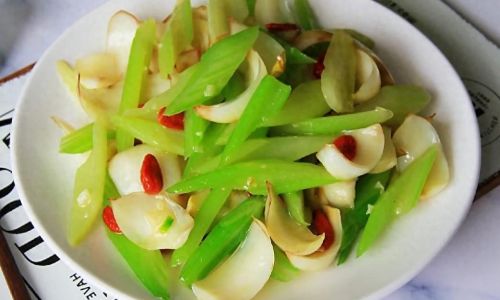
Health Benefits of Lilies
Beyond their culinary charm, lilies are nutrient-dense:
- Vitamins: Rich in vitamin C, B6, and folate.
- Minerals: High in potassium and manganese.
- Antioxidants: Flavonoids combat oxidative stress.
Traditional medicine also uses lilies to soothe coughs and reduce inflammation.
Presentation Tips
- Color Contrast: Pair lilies with vibrant vegetables like red bell peppers or edamame.
- Plating: Mound the stir-fry atop steamed rice or nestle it in lettuce cups.
- Garnish: A sprinkle of toasted pine nuts or a cilantro sprig adds elegance.
Storage and Leftovers
Store uncooked lilies in a perforated bag in the refrigerator for up to a week. Cooked stir-fries keep for 2–3 days; reheat gently to retain crispness.
Conclusion
Stir-fried lilies are a testament to the magic of simplicity—a few quality ingredients, precise technique, and a dash of creativity. Whether you’re a novice cook or a seasoned chef, mastering this dish opens doors to a world of culinary exploration. Experiment with seasonings, embrace the crunch, and let the lily’s delicate charm transform your meals.
Epilogue: The Joy of Shared Meals
In many cultures, food is love. A plate of stir-fried lilies, meticulously prepared, speaks volumes. Share it with loved ones, and savor not just the flavors, but the stories they inspire. After all, the best dishes are those made with passion—and a little bit of culinary wisdom.
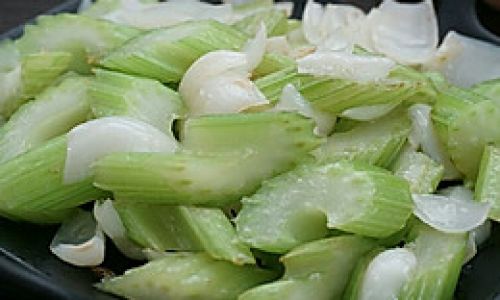
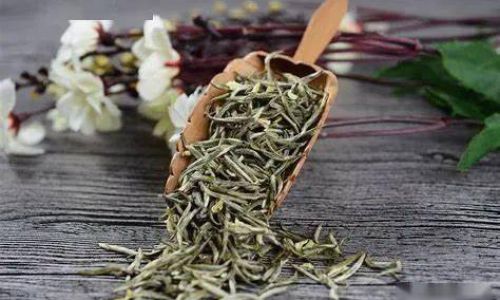
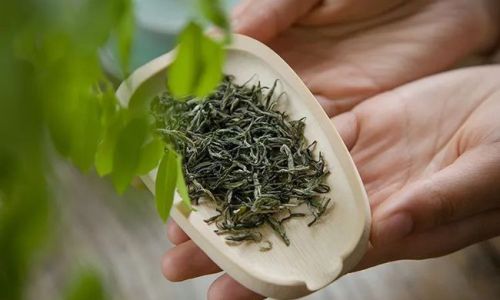


0 comments